Australian Tropical Rainforest Plants - Online edition
Alphitonia petriei Braid & C.T.White
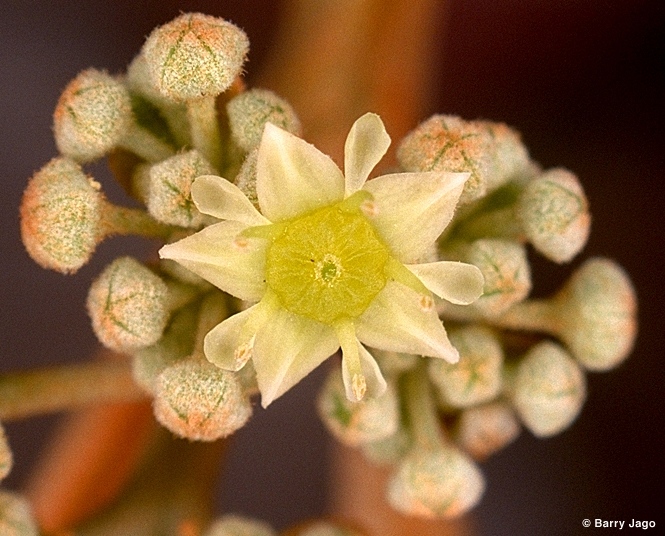
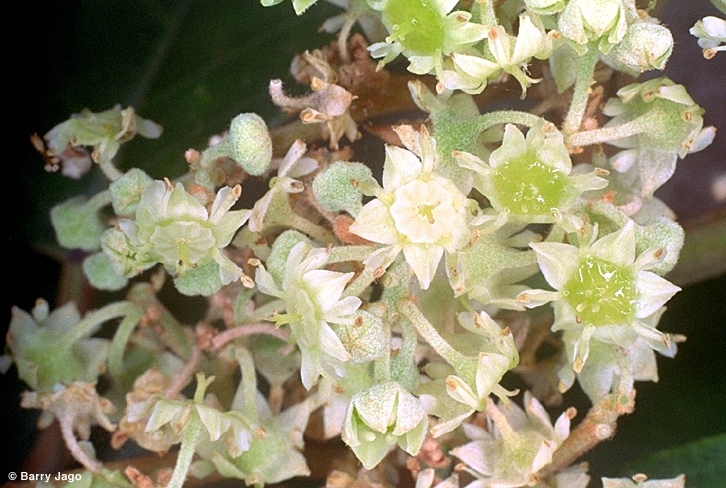
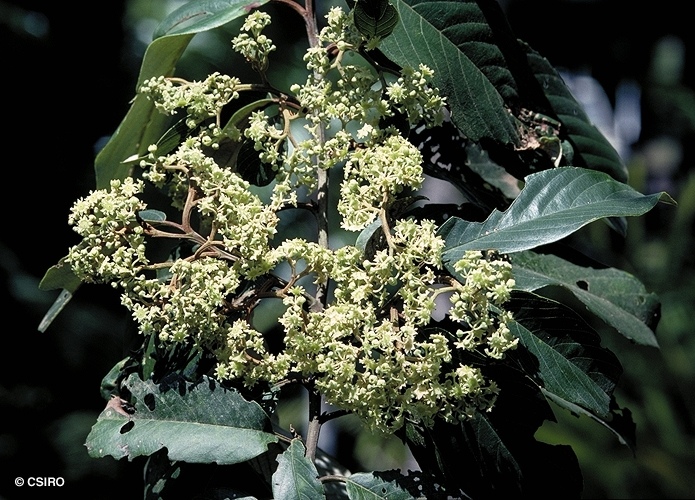

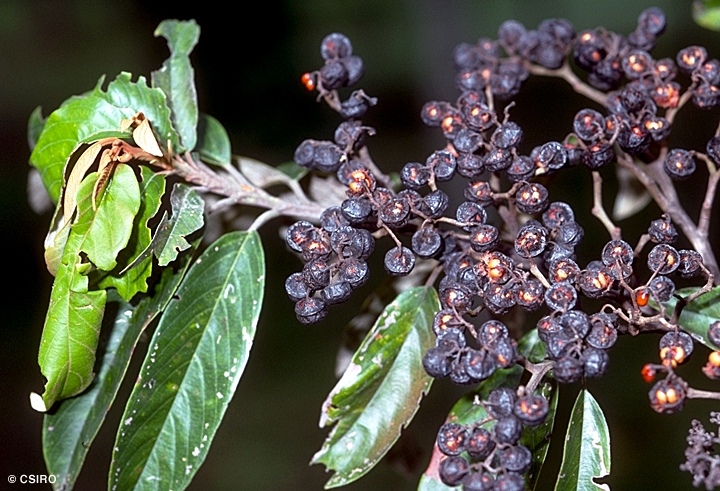

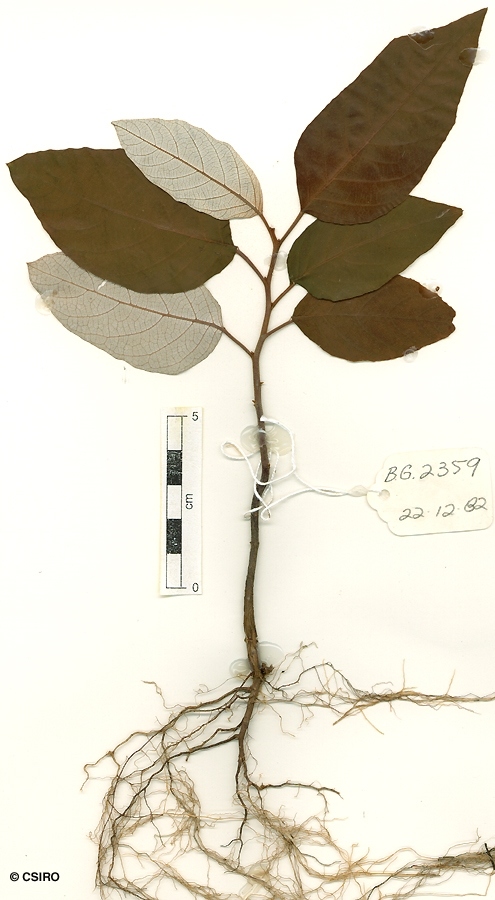

Braid, K.W. (1925) Bulletin of Miscellaneous Information 1925(4): 178. Type: Johnston River, Ladbrook 46; Kuranda, White (1525) 43.
Pink Almond; Whiteleaf; White Ash; Soap Tree; Sarsaparilla; Red Ash; Red Almond; Foambark; Ash, White; Ash, Pink; Ash, Red; Pink ash
Strong liniment odour produced by the inner blaze or the cambial layer. A minority of observers liken the odour to that of sarsaparilla.
Leaf blades about 6.5-16 x 2.5-7.5 cm, almost white on the underside. Stipules small and inconspicuous, about 1-3 mm long. Broken twigs produce an odour like that of the inner blaze.
Fruits about 7-15 mm diam. Mesocarp powdery at maturity. Seeds inflexibly attached to the receptacle.
Cotyledons about 6-8 mm long. First pair of leaves occasionally with a few teeth. At the tenth leaf stage: leaf blade white on the underside from matted downy hairs; petiole often clothed in tortuous, brown hairs; stipules short, hairy. Seed germination time 14 to 297 days.
Probably endemic to Australia, occurs in CYP, NEQ, CEQ and southwards to north-eastern New South Wales. Altitudinal range in CYP and NEQ from 100-1200 m. Grows in well developed rain forest on a variety of sites but is more common in upland and mountain areas. This species is favoured by disturbance and is a characteristic component of rain forest regrowth, often dominating the regrowth along new roads through rain forest.
Seeds eaten by King Parrots and Crimson Rosellas, fallen fruit eaten by Cassowaries. Cooper & Cooper (1994).
The most distinctive character of this tree is the scent of the leaves and fresh bark; they smell of oil of wintergreen, a scent recognized as one of the ingredients of sarsaparilla drinks and of various proprietary lines such as some toothpastes. Cribb (1981).
Sometimes grows large enough to produce millable logs. Produces a useful general purpose timber.
Wood specific gravity 0.51. Cause et al. (1989).





